It’s simple to imagine yourself in the Upside Down from Stranger Things when taking a test drive in one of Toyota’s most recent vehicles. No other vehicle in the lineup of the Japanese manufacturer better illustrates how much has changed than the 2019 Toyota Corolla Hatchback. The Corolla Hatchback now adds fun to its illustrious past as the safe pick for anything, whether that’s a car for a first-time buyer, a commuter car, or an urban warrior.
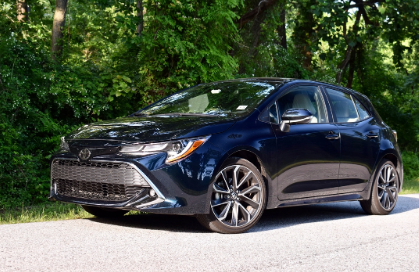
It’s okay if you weren’t aware of the seismic change because nobody else was either.
Numerous automakers have declared the death of compact cars, but Toyota hasn’t received the memo because the 2019 Corolla Hatchback is brand-new. The name change is the primary distinction. The Corolla Hatchback, once known as the Scion iM, is now solely a Toyota. The outside appearance, which is sharper, more assertive, and less plain, comes next. Since there is no reason to replace the outside without also giving the cabin a facelift, the interior has also been glammed up. The star of the show is Toyota’s TNGA platform, which is positioned underneath all of this. This is the best approach to prevent people from switching to SUVs.
There are only the SE and XSE trims to choose from in order to keep things straightforward. The SE is reasonably priced, starting at $21,070 including destination. The starting price of the XSE trim that we tested is a tad more at $24,070. The $415 adaptive headlamp system was the lone option installed on our XSE trim, raising the cost of our tester to $24,880.
Both inside and outside design
Toyota has been working diligently to transition the Corolla from the security of a warm, comfortable home where everything is paid for by your parents to an uncomfortable, wet apartment where rent takes up more than half of your salary. The brand-new Corolla hatchback steps out into the harsh world with a snarling face that is reminiscent of everything that bears the logo of the company. The design works on the hatchback even though it is contentious on some vehicles. We think the gaping front air inlet and razor-sharp headlamps are the best parts of the car. Additionally, the Corolla’s rear end features multiple exhaust outlets and sleek LED taillights. The young styling isn’t particularly soul-stirring, but it strikes a good balance between the all-out boy racer styling of the Honda Civic, especially the Type R, and the older Corollas. It must be a satisfactory middle ground for the majority of people.
Every manufacturer, including Toyota, is trying to cut costs on cars that aren’t SUVs since the compact market isn’t as well-liked as it previously was. The Corolla’s cost-cutting method is carried out internally, albeit it would be difficult to identify the inferior components. Compared to the original Corolla or iM, the dashboard’s appearance is much more dramatic and strikingly simple. Although they have an odd color, the XSE trim’s sport seats are a combination of leather and cloth and provide excellent comfort. The Moonstone color scheme might not be a smart choice if you prefer denim because the colors will undoubtedly bleed into the leather. Beyond that minor complaint, the Corolla’s front seat is excellent.
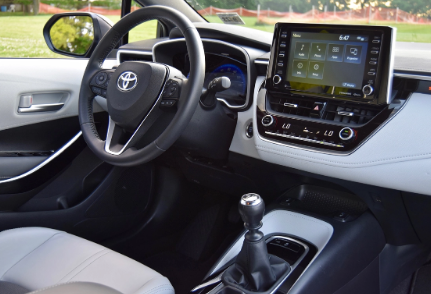
The back of the Corolla Hatchback exhibits its first signs of fragility. Regarding rear legroom, it lags well behind its rivals. Rear legroom in the Volkswagen Golf is 35.6 inches while it is 36 inches in the Honda Civic hatchback. The Corolla Hatchback has only 29.9 inches of rear legroom, which is nearly six inches less than the Civic. Additionally, the Corolla Hatchback’s 17.8 cubic feet of cargo space behind the rear seats presents a problem. The Civic Hatchback has the most cargo space of the three vehicles with 25.7 cubic feet, followed by the Golf with 22.8 cubic feet.
The Corolla Hatchback has a ton of amenities that all operate as expected and are simple to reach because, well, it’s still a Corolla. The XSE version that we drove had a 7-inch instrument cluster display, heated front seats, dual-zone climate control, an 8-inch touchscreen, a thick leather-wrapped steering wheel that tilted and telescoped, and heated front seats. You can tell that things have been carefully considered because of the whole Toyota situation. There is no fumbling around looking for buttons or pressing a button by accident when you meant to press another one. Toyota has strong roots, and while the façade may not be a typical Toyota setting, the interior environment certainly is.
Technical aspects
The Corolla Hatchback definitely benefits from technology as one of its advantages over rivals because to its abundance of tech-rich features. An 8-inch touchscreen running Toyota’s Entune 3.0 infotainment system is standard on all Corolla Hatchback models. Although Apple CarPlay is available, Entune 3.0 isn’t exactly the simplest thing to use because of its Playstation 2-era aesthetics and layout. Toyota is still able to contain Android Auto’s wildfire spread.
Two USB ports, Bluetooth, a Wi-Fi hotspot, a 12-volt power outlet, and a six-speaker audio system are all included on the standard Corolla Hatchback. An HD radio, sophisticated speech recognition, and satellite radio are included when you upgrade to the XSE model that we tested. The upgrade to the XSE might not appear worthwhile from that condensed list. But the hatchback’s long list of safety features is what actually makes it stand out.
Every Corolla Hatchback is equipped as standard with Toyota Safety Sense 2.0. Settle in because there are many standard features, so do so. Automatic high beams, adaptive radar cruise control, lane departure alert with steering assistance, pre-collision systems with pedestrian recognition, and traffic sign assistance are all standard. The lane tracing assist feature is part of the suite if you choose a model with a continuously variable gearbox, though it’s unclear how these two capabilities are connected. Blind spot monitoring is included in the top-tier XSE trim. The Corolla Hatchback prioritizes safety.
Opinions about driving
The Corolla Hatchback drives like a Corolla despite its exterior design that resembles something from Fast and the Furious, which isn’t necessarily a negative thing. It’s the most enjoyable Corolla to drive, but it falls short of competing with other hatchbacks like the Golf, Mazda3, and Civic Hatchback. However, the Corolla Hatchback excels as a daily driver if you’re not seeking for a hot hatchback to establish track records with. If you choose the six-speed manual transmission, which our XSE had, you’ll have a daily car that is truly enjoyable to drive, even if it isn’t as enjoyable as its main competitors.
The Corolla Hatchback received an entirely new engine since it deserved one given its brand-new design. Toyota refers to the 2.0-liter inline-four engine under the hood as Dynamic Force. A modest 168 horsepower and 155 pound-feet of torque are produced by the engine because there are no turbochargers, superchargers, or other sophisticated tricks in the engine compartment. Therefore, the name Dynamic Force may not be the best choice. The fact that Toyota provides a six-speed manual transmission, which our XSE had, is the genuine ray of hope. The CVT is the alternate option.
The Corolla’s competitors’ sporty personalities, which err on the side of athleticism, aren’t quite matched by the engine, which is far from something that will make you mutter, “Wow,” under your breath. However, it does the job. There is a good amount of passing power if you keep the rpm up around the top of the range, or you can sprint to the next stoplight. The small would get the low-down grunt it lacks and some much-needed boost from a turbocharger.
Numerous automakers have declared the death of compact cars, but Toyota hasn’t received the word.
The Corolla Hatchback deserves praise for offering a six-speed manual transmission as an option. It’s the transmission to get if you know how to operate a manual gearbox, and even if you don’t. In what was formerly considered to be one of the most uninteresting vehicles on the market, Toyota is now selling a snappy six-speed transmission at a time when sporty automakers, like BMW and Mazda, are moving away from having manual gearboxes. Additionally, the transmission is good.
The clutch’s modulation catch point is high and difficult to adjust, and the shifts can be a little long, but those are only minor drawbacks. When the gearknob reaches its final position in the clearly defined gate, the shifts produce a satisfying click. Additionally, manual transmissions have an iMT button that enables rev-matching downshifts and regulates engine speed for slick upshifts. Despite the fact that some people would object to the inclusion of a rev-matching technology on a sporty hatchback, the system fits the Corolla Hatchback’s nature of being simple to drive. The iMT button was always activated while we were driving the car, even for someone who enjoys heel-and-toeing at every chance.
Again, the Corolla Hatchback sacrifices ride quality for daily comfort. Sneer all you want, but most drivers don’t want to feel every pothole or every crack in the pavement, nor do they want a minor divot to feel like slipping and landing squarely on their behinds on an ice rink. The Corolla Hatchback delivers in that regard, providing a comfortable ride over even the worst of highways.
Excellent fuel efficiency is also provided. With an automatic transmission, the most economical Corolla Hatchback can achieve up to 32 mpg in the city, 42 mpg on the interstate, and 36 mpg overall. A model with a manual transmission is the least efficient of the hatchback group, with a combined rating of 31 mpg, while the XSE with a CVT is less efficient with a combined rating of 33 mpg. In the real world, we easily averaged over 30 mpg, so those numbers stand up. The car’s fuel economy didn’t fall below 27 mpg even when heavily driven.
Rivals
The two hatchbacks that first come to mind when discussing the Corolla Hatchback’s main competitors are the Volkswagen Golf and the Honda Civic. The Corolla Hatchback’s affordability is demonstrated when compared to these two versions. The Corolla Hatchback SE is priced from $21,070 upwards. The Golf is $22,740 more expensive than the Civic Hatchback, which is $22,370.
Even while the Corolla Hatchback is more expensive, it isn’t truly competitive in other areas. The Civic Hatchback boasts a stronger turbocharged engine, improved fuel efficiency, and a roomier interior. It’s also one of our top picks among compact cars. The list of standard safety features for the Civic Hatchback and Corolla Hatchback is comparable thanks to Honda Sensing. With the Golf, things are more difficult since its engine is less effective and powerful, but it also has a bigger cargo area. The Golf GTI is almost flawless for drivers who value performance.
Calmness of mind
The Japanese automaker’s warranty isn’t the best on the market, but its track record for producing reliable cars that hold up to years of misuse is. A three-year, 36,000-mile basic warranty, a five-year, 60,000-mile powertrain warranty, and a five-year, unlimited-mile anti-perforation guarantee are all included with the Corolla Hatchback.
Both the Insurance Institute for Highway Safety (IIHS) and the National Highway Traffic Safety Administration (NHTSA) gave the Corolla Hatchback high marks in their individual crash testing. The Corolla Hatchback was named a Top Safety Pick by the IIHS, but only for XSE grades with the optional Preferred Package. The Corolla Hatchback received a five-star overall safety rating in the NHTSA’s tests.
The Corolla Hatchback boasts one of the longer lists of standard safety features thanks to TSS 2.0, which comes as standard. Beyond TSS 2.0, the hatch incorporates Toyota’s Star Safety System, which comprises anti-lock brakes, electronic braking-force distribution, stability control, and traction control. It also includes brake assist and smart stop technology. There are also eight airbags in the mix. For the first three years, Safety Connect is included as standard, including emergency help, a stolen vehicle tracker, roadside assistance, and automated collision notification.
How DT would set up this vehicle
Decide on the manual transmission for yourself. When a high school senior finds out they got into college, sales of compact vehicles with manual transmission fall more quickly than their grade. Later on, it could be challenging to get into one. The Corolla Hatchback’s manual transmission is forgiving and simple to learn on, making it a good choice for drivers who aren’t accustomed to them. Plus, by avoiding the CVT, you will save a little over $700.
The XSE trim is the one we’d choose because it comes with more standard equipment for a fair price. Galactic Aqua Mica was used to finish our testing, and it is an absolutely gorgeous shade. Blue Flame is a wonderful blue hue as well. The only other suggestion is to choose a black interior because lighter leather is more prone to stains. The single package offered includes adaptive headlights, which are well worth the $415 asking price and are fairly priced.
Our View
The Corolla Hatchback is light years ahead of the previous Scion iM after just one day of use. In terms of performance, fuel efficiency, or interior room, rivals like the Honda Civic, Volkswagen Golf, and Mazda3 could be superior, but the Corolla Hatchback is an alluring choice as a whole. Checking the boxes for the manual transmission and the user-friendly iMT system offers a glimpse of the hatchback’s enormous potential.
Do you need one?
Yes. Toyota has joined the trend of producing reasonably priced daily drivers that aren’t awful to own, which might surprise you. love driving or automobiles? With a Corolla Hatchback in your driveway, you don’t have to slouch and stammer when people inquire what you own.
You can also check 2020 Aston Martin Vantage AMR first drive review

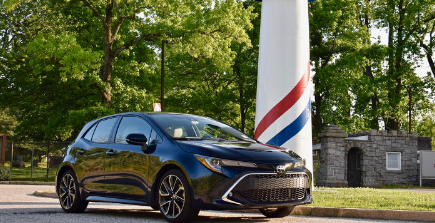
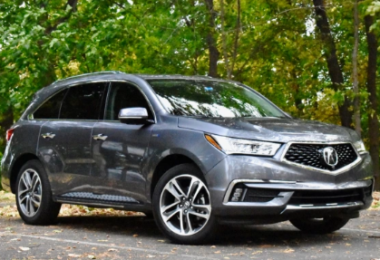

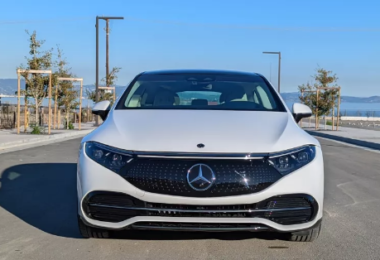

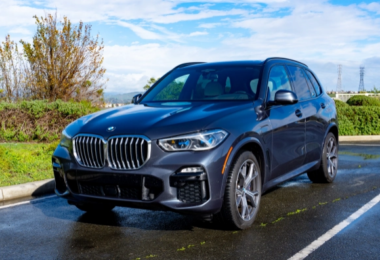
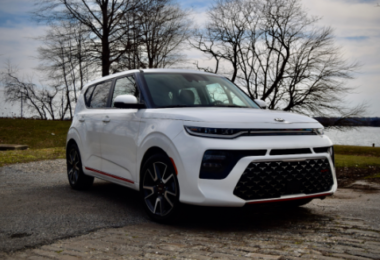
[…] You can also check 2019 Toyota Corolla XSE Hatchback Review, And All You Need To Know About It […]